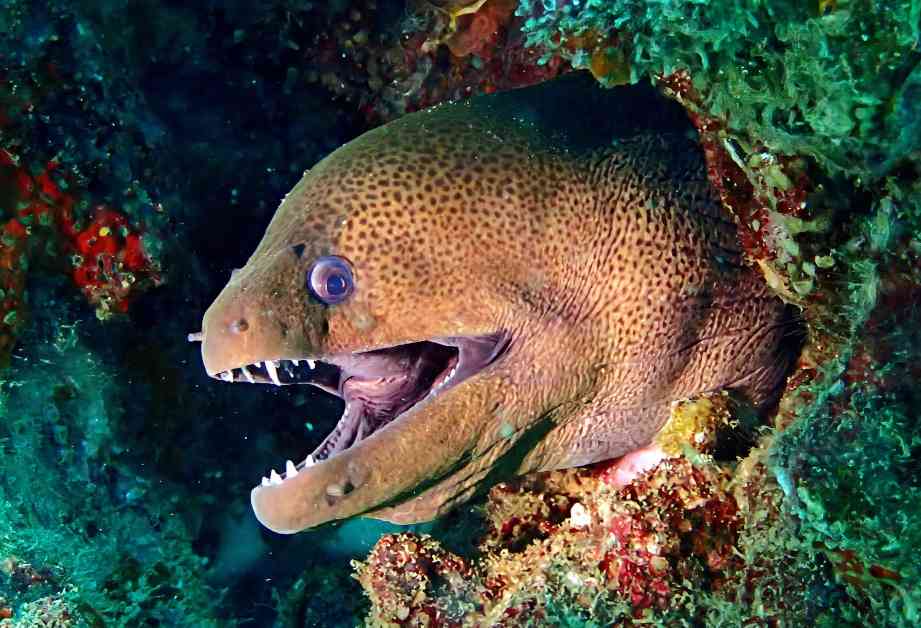Electric eels have long been a source of fascination and fear for humans, with their ability to generate electricity making them one of the most unique creatures in the animal kingdom. But what exactly makes these aquatic hunters so shocking, and how do they harness this power to their advantage? Let’s delve into the science behind electric eels and unlock the secrets of their electrifying abilities.
### Anatomy of Electric Eels
Despite their name, electric eels are not actually true eels like those found in the order Anguilliformes. Instead, they belong to the Gymnotiformes order, also known as knifefishes. These creatures have a closer resemblance to carp and catfish, with their elongated, slender bodies and tapered tails that aid in swift movement through the water. This sleek form is essential for their hunting and survival in the dynamic river ecosystems of South America.
A fully grown electric eel can reach an impressive length of 2.5 meters and weigh up to 20 kilograms, making them formidable predators in their environment. Unlike their marine counterparts, electric eels are primarily air breathers, deriving around 80% of their oxygen needs by gulping air into their mouths. This unique adaptation allows them to thrive in oxygen-poor waters, giving them a distinct advantage over other species.
### Unique Evolution of Electric Eels
Electric eels are native to the murky rivers of the Amazon and Orinoco basin, where they have evolved to become living generators of electricity. Three specialized organs within electric eels give them the incredible ability to produce electric shocks. Known as the main organ, the Hunter’s organ, and the Sach’s organ, each of these organs contains around 6,000 specific cells called electrocytes. When the eel feels threatened or attacks prey, these electrocytes discharge power, turning the eel into a living, breathing generator of electricity.
Dr. Rupert Collins, Senior Curator of Fishes at the Natural History Museum in London, explains, “Electric eels are like living batteries. They have stacks of modified muscle cells called electrocytes, which discharge an electrical impulse into the surrounding water when triggered.”
### The Shocking Survival Mechanism
One might wonder how an electric eel can generate such potent electric shocks without harming itself in the process. While the exact mechanism is still not fully understood, scientists believe that the water surrounding the eel likely absorbs most of the electrical current. Each electric discharge lasts for only about 2 milliseconds, which may not be long enough to harm the eel itself.
Electric eels typically generate around 600 volts of electricity, with some individuals capable of producing up to 860 volts. While fatalities from electric eel shocks are rare, multiple shocks can lead to severe respiratory difficulties and even stop the heart. Coupled with the risk of drowning, encountering an electric eel in open water can have deadly consequences.
### Ecological Role of Electric Eels
Electric eels are not just powerful predators; they also play a crucial role in maintaining the balance of their ecosystems. As top predators in the waters of the Amazon and Orinoco basins, they help control populations of fish and other aquatic creatures. By hunting with their electric discharges, they can stun multiple prey at once, efficiently capturing food while keeping the food chain in check.
Recent studies suggest that electric eels may influence their surroundings beyond hunting. The electrical fields they generate could deter other predators or even serve as a form of communication in the murky waters they inhabit. This highlights their importance as essential contributors to their aquatic ecosystems.
In conclusion, electric eels are truly remarkable creatures with a unique ability to generate electricity. Their anatomy, evolution, and ecological role all contribute to their fascinating presence in the animal kingdom. As we continue to study and learn more about these incredible creatures, we gain a deeper understanding of the intricacies of the natural world and the diverse ways in which different species adapt to their environments.













